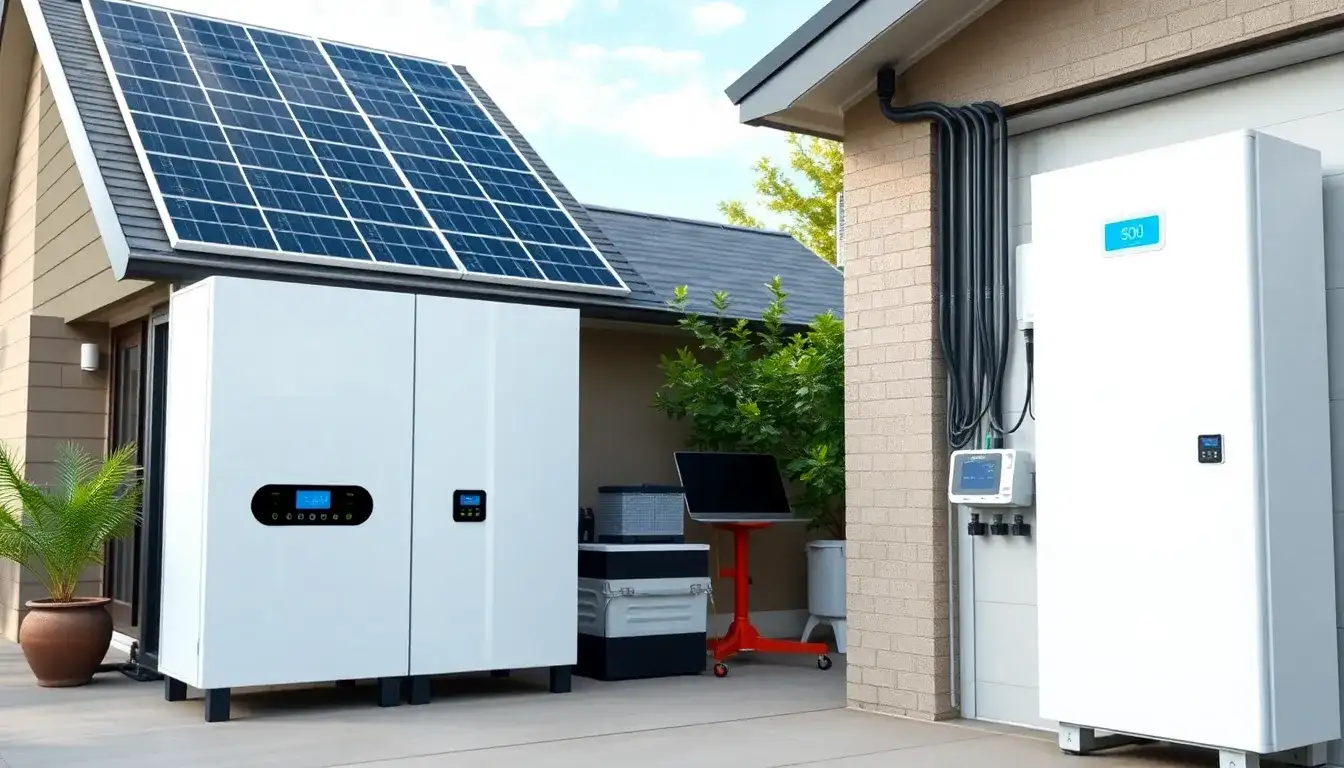
The integration of solar energy and storage systems is becoming increasingly evident worldwide, with significant potential in the home energy storage market. This trend is especially pronounced amidst the ongoing development of photovoltaic (PV) technology and rising penetration rates. Key factors driving the rise of home solar energy storage systems include:
Home solar storage systems are rapidly evolving in international markets, particularly in regions with favorable policies, high electricity prices, and strong demand for renewable energy. As of 2023, Europe’s solar power generation capacity has exceeded 200 GW, and the installation of home energy storage systems has seen explosive growth. It is projected that by 2025, the installed capacity of home solar storage systems in Europe will reach 12.8 GWh.
Homeowners can opt to consume electricity during off-peak hours when prices are lower, thereby significantly reducing their electricity costs and better managing their household utility bills. In some areas, users can charge their storage systems when electricity prices are low and utilize that stored energy during peak periods when rates are higher, or even sell excess power back to the grid for profit.
Many homeowners aim to reduce their reliance on the grid, especially during power outages or periods of instability. In such cases, solar storage systems can serve as backup power sources to meet essential household energy needs. Additionally, a growing number of homeowners are environmentally conscious and seek to lower their carbon footprints. Solar storage systems generate no greenhouse gas emissions, addressing this concern effectively.
Investing in solar storage systems also allows homeowners to benefit from various government incentives, including installation subsidies, tax breaks, and other financial aids.
Home solar power systems began to mature overseas over the past decade. Due to a mismatch between daily solar generation and household energy consumption, homeowners prefer to combine solar power with storage solutions to achieve complete energy self-sufficiency.
Homeowners typically exhibit characteristics such as low energy consumption, a large user base, and complex energy needs. Often, they only learn about their energy usage when receiving monthly electricity bills. Moreover, many consumers are unaware of demand-side energy management, making it difficult to alter their consumption habits and reduce utility expenses. Home solar storage systems enhance energy dispatch capabilities and flatten peak usage, leading to optimized electricity costs.
The main components of a home solar storage system include the solar PV system, energy storage system, household loads, and the home energy controller:
- Solar Inverter: Converts direct current (DC) electricity from solar panels or storage batteries into alternating current (AC) electricity compatible with the grid or home loads.
- Bidirectional Meter: Installed at the connection point between the home grid and the public grid, commonly found in the meter box or near the main circuit breaker. It measures the power consumed from the grid (forward measurement) and the power fed back into the grid (reverse measurement).
- Household Loads: The electrical loads in a home consist of various appliances and devices, including lighting, HVAC systems, laundry equipment, security systems, and electric vehicle charging stations.
The home energy controller coordinates the energy flow between solar panels, storage, and the grid, optimizing energy use by managing load profiles, peak shaving, and renewable energy integration.
The Ankarey Home EMS solar storage system solution provides real-time monitoring of solar, storage, and load data, energy metering, consumption analysis, diagnostic alerts, panoramic analysis, orderly management, and strategic control—ensuring reliable, safe, and orderly household electricity use.
The home energy controller retrieves operational data and statuses from household meters, solar inverters, and smart home devices via RS485, Ethernet, or WiFi. It supports communication protocols such as Modbus RTU, Modbus TCP, and MQTT. By analyzing power usage data and consumption periods, the controller enables optimal energy adjustments and efficient operations. System data can be sent to a cloud platform via WiFi, 4G, or Ethernet for monitoring and management across multiple home energy systems. Additionally, the controller can store data locally during network outages and resume data transmission once connectivity is restored, ensuring no loss of server-side data.
The Home EMS offers both WEB and APP access for users to view real-time statuses of solar, storage, and loads, monitor system alerts, track energy usage and earnings, and adjust operational parameters and control strategies, all manageable via a mobile app.
Some key functions include:
- Enhancing Solar Utilization: Real-time adjustment of storage charging and discharging enables homeowners to store excess solar energy when demand is low and release it when demand is high, reducing electricity costs.
- Peak and Off-Peak Arbitrage: Taking advantage of the price differences between peak and off-peak electricity rates allows homeowners to maximize savings by charging during low-rate periods and discharging during high-rate periods.
- Avoiding Excess Electricity Costs: During peak usage, the system triggers storage discharge to minimize electricity expenses. Users receive alerts via APP or SMS if energy reserves are insufficient.
- Emergency Backup Power: Given the instability of many national grids, energy storage batteries can provide emergency power, ensuring seamless household electricity use.
- Environmental Data Tracking: With increasing governmental focus on environmental protection, homeowners can track their contributions to green energy usage and carbon offset through the APP.
The system displays the operation status of solar, storage, and loads, providing real-time statistics on energy storage, usage, and renewable generation while highlighting the societal and economic benefits of renewable energy.
It categorizes and summarizes data for individual households regarding solar generation, storage, and grid usage, including peak and off-peak generation and consumption statistics. It also tracks costs and earnings associated with solar energy generation, storage operations, and grid electricity usage.
Logs are maintained to record any instances where equipment operates beyond set limits or experiences anomalies, monitoring parameters such as current, voltage, power, and frequency, as well as conditions like excessive solar panel temperatures, inverter faults, and abnormal battery metrics.
The system also provides real-time weather data, solar generation, storage, and grid statistics, supporting historical data viewing by day, month, year, or cumulative totals, displayed in graphical formats.







